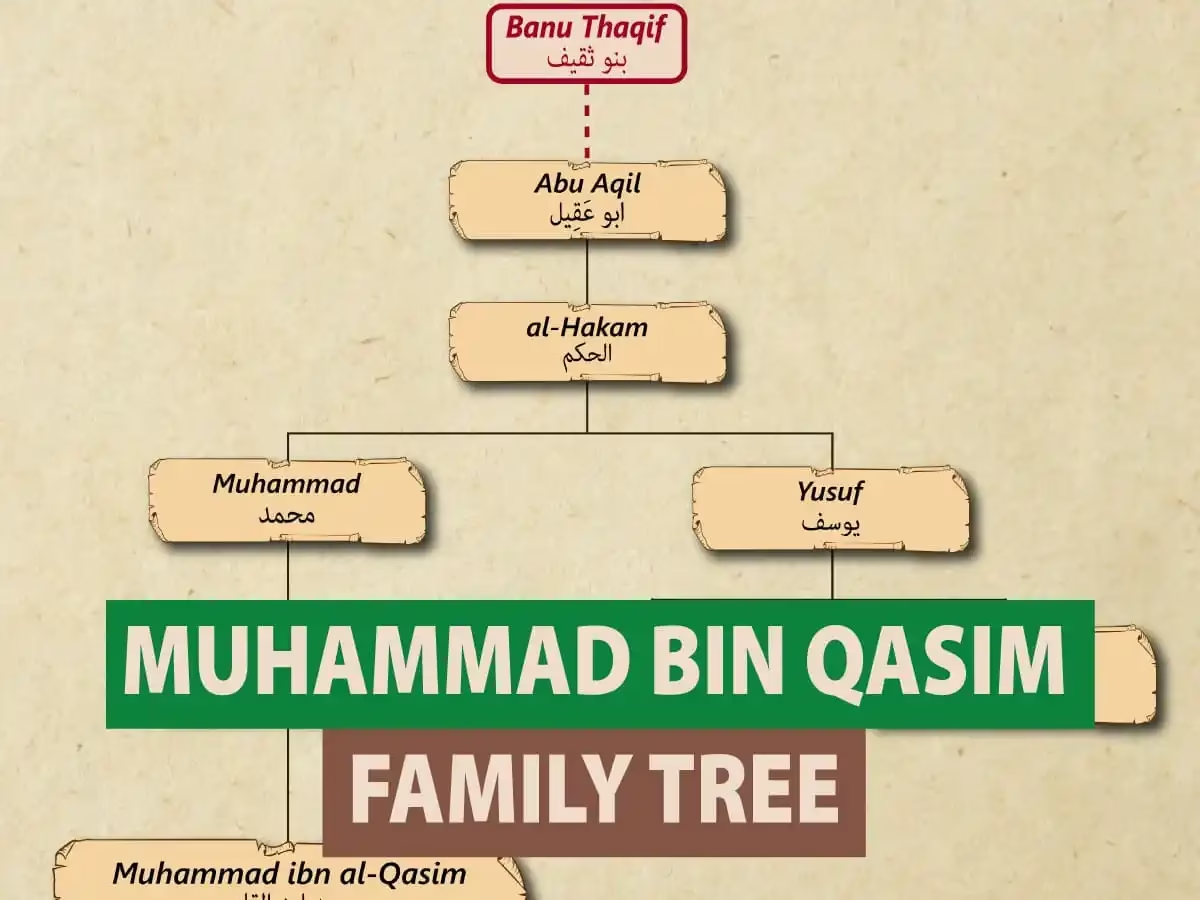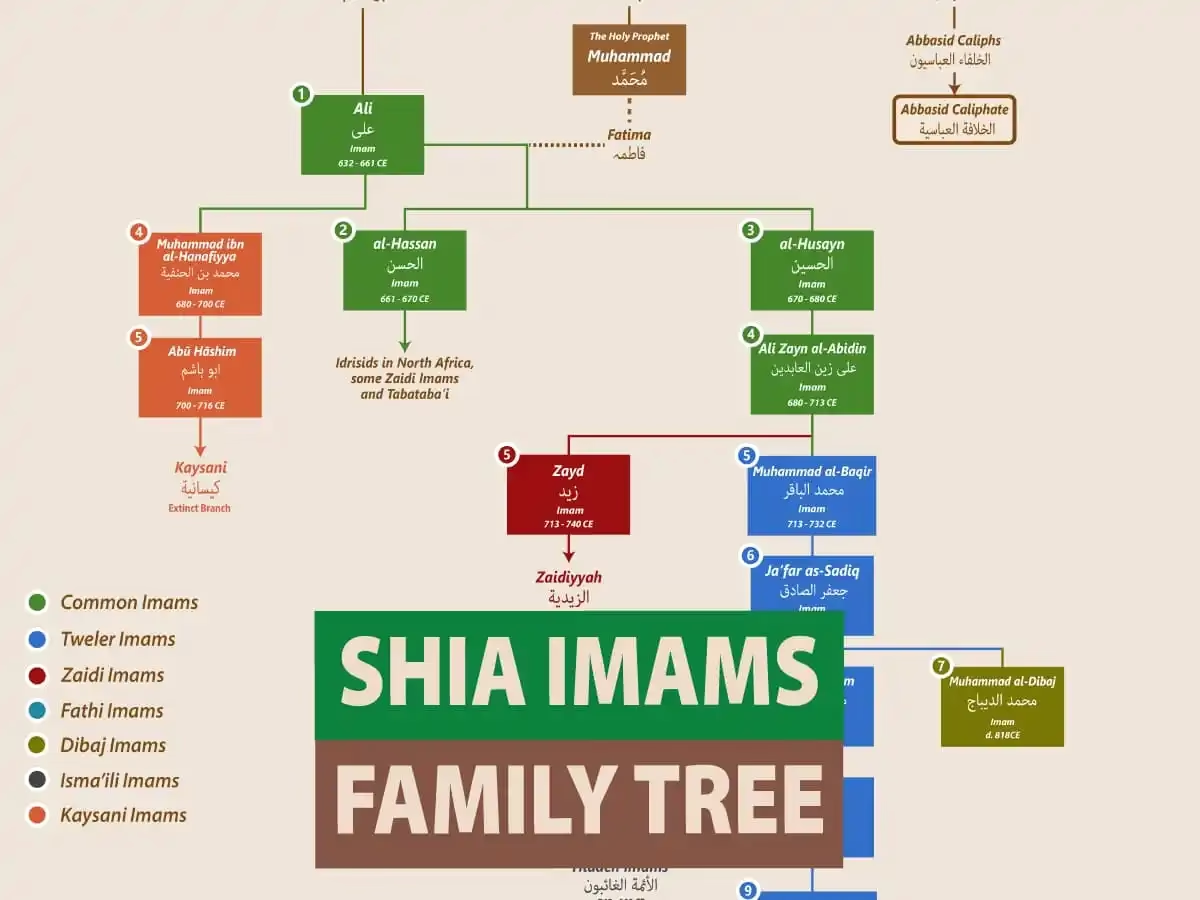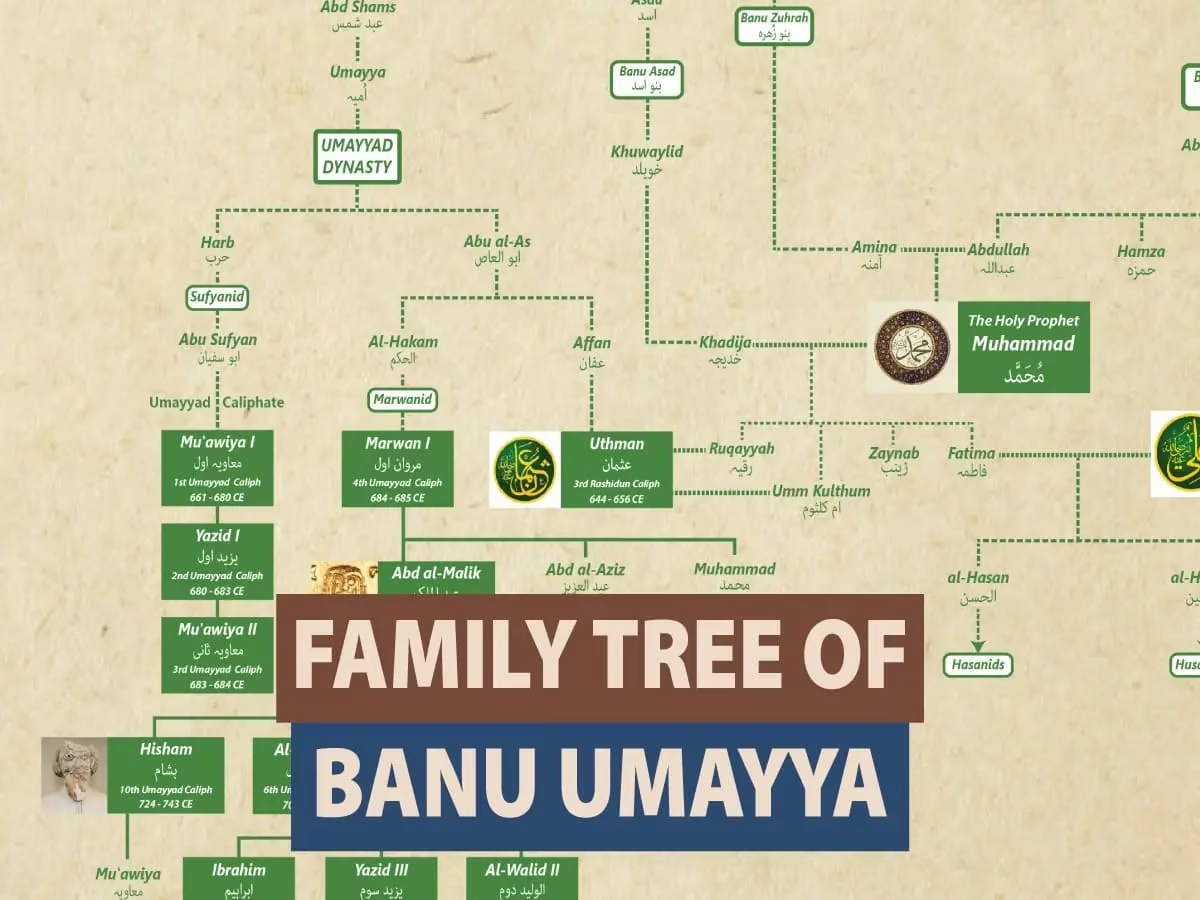The story of Ahmad Shah Durrani, the founder of the Durrani Empire, is not just the tale of a conqueror — it is the story of the man who laid the foundations of modern Afghanistan. His family tree reveals a rich tapestry of tribal legacy, royal power, and political struggle that shaped South and Central Asia in the 18th and 19th centuries.
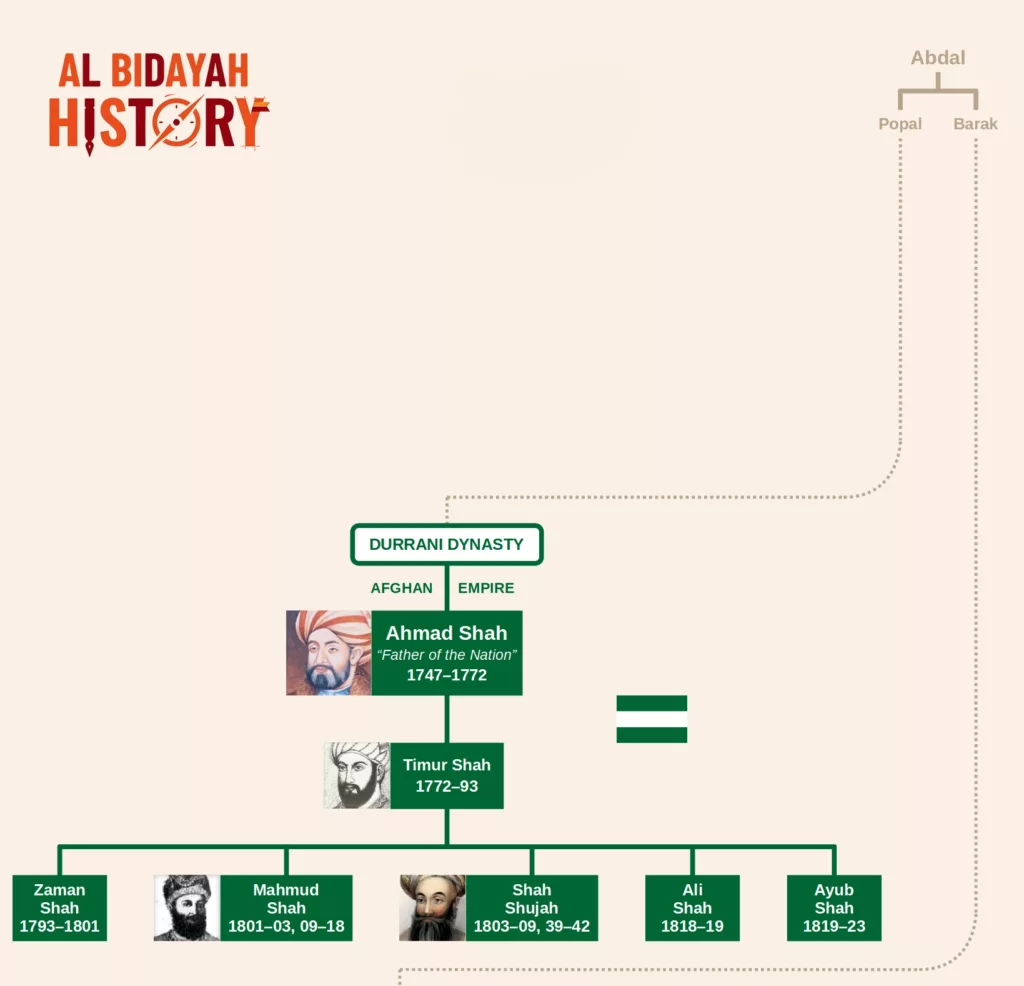
Tribal Origins
Ahmad Shah was born in 1722 CE in Multan (some sources say Herat) into the Sadozai lineage of the Abdali tribe — a powerful Pashtun tribal confederation. His father was Muhammad Zaman Khan Abdali, chief of the Sadozai clan, and his mother was Zarghuna Alakozai, a woman known for her wisdom and strength.
The Abdali tribe traced its ancestry to Qais Abdur Rashid, the legendary forefather of the Pashtuns. The tribe later took the name “Durrani” — meaning “the Pearl of Pearls” — after Ahmad Shah assumed the title Durr-i-Durran upon his coronation in 1747. From that moment, his descendants became known as the Durrani family, and his line became the royal house of Afghanistan.
Rise of the Durrani Dynasty
Ahmad Shah began his career as a commander under the Persian ruler Nader Shah Afshar. After Nader Shah’s assassination in 1747, Ahmad Shah was elected by the Pashtun chiefs as their king at Kandahar, thus founding the Durrani Empire — one of the largest Islamic empires of the 18th century. His dominion stretched from eastern Iran and Afghanistan to northern India.
But behind the glory of conquest and empire lay a family that would rule, fracture, and rebuild Afghanistan for generations.
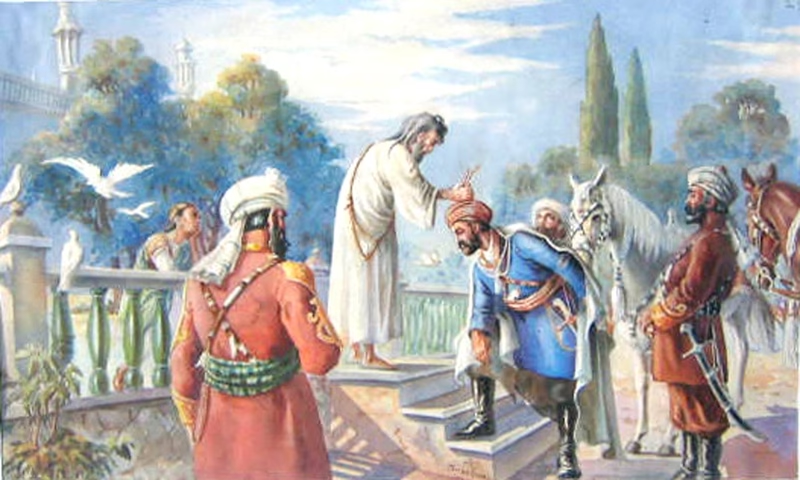
Ahmad Shah’s Immediate Family
Father
- Muhammad Zaman Khan Abdali (Sadozai)
Chief of the Abdali tribe and an ally of the Persian court. His leadership and alliances laid the foundation for Ahmad Shah’s rise.
Mother
- Zarghuna Alakozai
A strong-willed and influential woman from the Alakozai tribe, remembered in Afghan oral history as a wise mother who shaped her son’s vision of leadership and unity.
Siblings
Ahmad Shah had several brothers, including Zulfikar Khan and Sardar Jahan Khan, but none achieved the political prominence that he did. His leadership was accepted by the tribal elders because of both his bravery and his lineage.
Ahmad Shah Durrani’s Wives
Ahmad Shah had multiple wives, as was customary among Pashtun rulers, to strengthen tribal alliances. His most notable wife was from the Popalzai clan, linking him to another powerful Pashtun family.
Ahmad Shah Durrani’s Children
Among his several children, his most famous and capable son was:
Timur Shah Durrani (1746–1793)
Timur Shah was the second ruler of the Durrani Empire and Ahmad Shah’s recognized heir. He ruled from 1772 to 1793 and moved the capital from Kandahar to Kabul, solidifying it as Afghanistan’s political center.
Timur inherited a vast empire but faced internal tribal revolts and external threats. Despite challenges, he maintained his father’s legacy and passed it on to his many sons — whose rivalry would later fragment the empire.
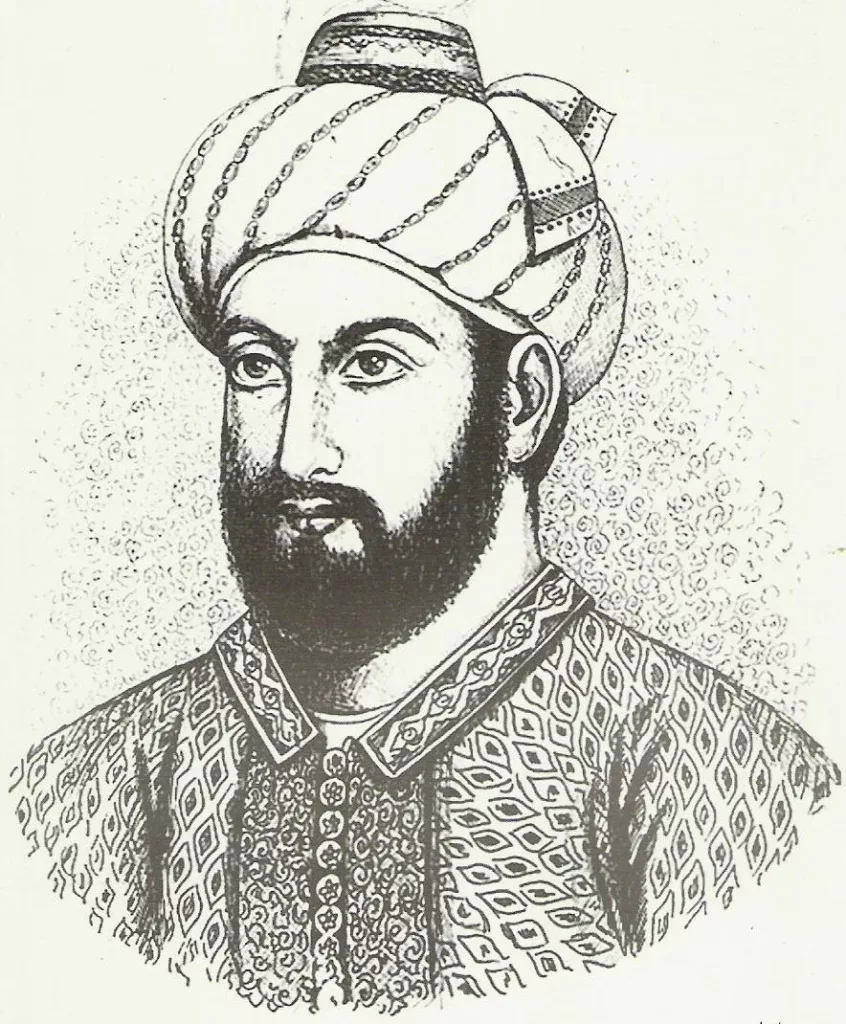
Descendants of Ahmad Shah Durrani
After Ahmad Shah’s death in 1772, the Durrani Empire entered a new phase under his son Timur Shah and his many descendants. The family tree expanded rapidly, but succession disputes weakened central authority.
Timur Shah fathered more than 20 sons, several of whom ruled Afghanistan in short or contested reigns.
Key Descendants:
- Timur Shah Durrani (1746–1793)
- Second ruler of the Durrani Empire
- Moved capital to Kabul
- Buried beside his father in Kandahar
- Zaman Shah Durrani (Reign: 1793–1801)
- Son of Timur Shah
- Tried to revive his grandfather’s power
- His rule was marked by conflicts with the Barakzai tribe
- Mahmud Shah Durrani (Reign: 1801–1803, 1809–1818)
- Another son of Timur Shah
- Briefly restored after Zaman’s deposition
- Father of Shuja Shah Durrani
- Shuja Shah Durrani (Reign: 1803–1809, 1839–1842)
- Son of Mahmud Shah
- The famous king restored by the British during the First Anglo-Afghan War
- Killed in 1842 after British withdrawal
- His reign marks the end of Durrani dominance and the rise of the Barakzai dynasty under Dost Mohammad Khan.
Later Durrani Princes
After the fall of Shuja Shah, the Durrani family continued as an aristocratic lineage but lost political power to the Barakzai rulers.
Still, many Durrani descendants retained noble titles, land, and influence in southern Afghanistan and among Pashtun tribes.
Branches of the family settled in Kandahar, Kabul, and Herat, and some migrated to British India (modern Pakistan), where the Durrani name remains associated with Pashtun aristocracy and scholarship.

